Product Overview
† commercial product
Modafinil is a racemic compound with unique properties in promoting wakefulness; modafinil’s mechanism of action appears to be distinct from that of other CNS stimulants. The potential for abuse liability with modafinil is apparently lower than that of other controlled stimulants, though still present. In clinical trials for narcolepsy, modafinil improved daytime vigilance, as assessed by decreases in the number and duration of daytime sleep episodes. Surveys of patient satisfaction in clinical trials for narcolepsy noted that modafinil produces a decreased sense of fatigue and an increase in mental alertness.[1] Modafinil appears to selectively decrease somnolence and does not affect activities of memory, concentration, or learning, or sleep latency/sleep structure in narcoleptic patients; the drug has no appreciable effects on the incidence of cataplectic attacks associated with narcolepsy. Due to its unique pharmacologic profile, modafinil has shown promise in clinical trials as a treatment for fatigue or excessive sleepiness associated with sleep apnea, or Parkinson’s disease.[1][2] Proposed military applications include the use of modafinil as an alternative to amphetamines to fight fatigue during prolonged combat missions. Modafinil (Provigil) was FDA-approved for use in patients with narcolepsy in December 1998; at that time, it was the first new molecular entity for use in narcolepsy in 20 years. On October 24, 2003 the FDA approved modafinil for the Shift Work Sleep Disorder (SWSD) indication and on January 26, 2004 for obstructive sleep apnea/hypopnea syndrome (OSAHS) in adults. In July 2000, Cephalon Inc. reported that, compared to placebo, modafinil therapy did not reduce the symptoms of attention-deficit hyperactivity disorder (ADHD) in adults, as measured by the DSM-IV ADHD Rating Scale in a phase III trial. Modafinil has not been proven safe or effective for pediatric patients for any condition; the drug was no more effective than placebo in children with narcolepsy. Modafinil was studied for ADHD in pediatric patients age 6 years and older; however, the FDA denied pediatric approval due to the risk for serious side effects, including reported cases of serious dermatologic reactions, Stevens-Johnson syndrome, potential risks for hepatic impairment or multi-organ hypersensitivity, and reported psychiatric and other side effects in children.[3]
The exact mechanism of modafinil’s action in reducing somnolence is not fully understood. The enantiomers of modafinil appear to have similar pharmacologic profiles. Modafinil-induced wakefulness can be attenuated by the alpha-1 adrenergic antagonist, prazosin, which led to the initial conclusion that modafinil stimulates the central alpha-1 adrenergic system. However, in vitro assay systems responsive to alpha-adrenergic stimulation have not shown that modafinil is a direct or indirect alpha-1 adrenergic agonist. The primary sites of modafinil’s CNS activity appear to be in the subregions of the hippocampus, the centrolateral nucleus of the thalamus, and the central nucleus of the amygdala. Limited animal studies demonstrate that modafinil may increase excitatory glutaminergic transmission in the thalamus and hippocampus. In contrast to the amphetamines and other CNS stimulants, the effects of modafinil do not appear to be mediated by dopamine or sympathomimetic systems. In vitro and in vivo studies demonstrate that modafinil does not bind to most of the neurochemical receptors involved in sleep-wake cycles, including norepinephrine, serotonin, dopamine, GABA, adenosine, histamine, monoamine oxidase B, and benzodiazepines. Modafinil also does not alter hormones associated with sleep regulation (i.e., melatonin, cortisol, or growth hormone). Modafinil-induced wakefulness does not influence nocturnal sleep patterns or the incidence of cataplexy in narcoleptic patients. In the periphery, the actions of modafinil appear to be minimal at normally prescribed doses. Modafinil doses of > 800 mg per day have produced symptoms of increased blood pressure and heart rate.
Modafinil produces euphoric and psychoactive effects that are similar to other CNS stimulants, including methylphenidate and the amphetamines. Reinforcing behavior, including incrementation of dose and modafinil-seeking behavior, has been observed in monkeys previously trained to self-administer cocaine. However, modafinil is over 200 times less potent than dextroamphetamine in producing addictive behaviors. In an inpatient study of humans experienced with drugs of abuse, modafinil produced psychoactive behavior, feelings, and euphoric effects comparable to methylphenidate; modafinil was partially discriminated as ‘stimulant-like’. Modafinil may potentially lead to habitual psychological dependence in some individuals. No specific withdrawal symptoms have been reported upon modafinil discontinuation in clinical studies. Unlike the amphetamines, modafinil has not been demonstrated to promote weight loss.
Modafinil is contraindicated in any patient with known hypersensitivity to modafinil, or the related compound armodafinil, or any of their inactive ingredients. Life-threatening serious rash (including Stevens-Johnson syndrome (SJS), toxic epidermal necrolysis (TEN), drug rash with eosinophilia and systemic symptoms (DRESS), erythema multiforme, and multi-organ hypersensitivity reaction) have occurred in association with modafinil therapy in adult and pediatric patients. Most rashes have developed within 1-5 weeks of treatment initiation. However, prolonged administration should not preclude the possibility of an association to the drug. Modafinil should be discontinued if rash or other hypersensitivity reaction appears at any time during treatment if an association to the drug is suspected or confirmed. Angioedema has been reported during post-marketing use of the drug. Patients should be instructed to immediately report swelling of the face, eyes, lips, tongue or larynx, difficulty in swallowing or breathing, or hoarseness to their health care provider, and seek emergent medical treatment.[3]
Assess patients frequently for their degree of sleepiness. Although modafinil has not been shown to produce functional impairment, any CNS stimulant could potentially alter thinking, judgment, or motor skills. Modafinil may mask signs that a patient is physically in need of sleep. Patients should be cautioned against driving or operating machinery, or performing other tasks that require mental alertness, until they are aware of the effects modafinil treatment has on their ability to perform such tasks.[3]
Various adverse psychiatric effects have occurred during administration of modafinil including mania, hallucinations, depression, and suicidal ideation. Caution should be exercised when administering modafinil to patients with a known history of mania or bipolar disorder, depression, psychosis (e.g., schizophrenia), suicidal ideation. Such patients may need behavioral assessments or frequent clinical observation. Consider discontinuing modafinil if psychiatric symptoms develop.[3]
Increased monitoring of heart rate and blood pressure may be appropriate in patients on modafinil. Caution should be exercised when prescribing modafinil to patients with known cardiac disease. Modafinil is not recommended in patients with a history of left ventricular hypertrophy or heart failure, and use is not recommended in patients with valvular heart disease (mitral valve prolapse) who have experienced the mitral valve prolapse syndrome when previously receiving CNS stimulants. Consider increased monitoring in patients with a recent history of acute myocardial infarction or unstable angina. Also use caution in patients with pre-existing hypertension. Modafinil has been associated with cardiovascular side effects in clinical trials in some patients with cardiovascular disease. Some of these changes have included palpitations, chest pain, ECG changes, and dyspnea. Findings suggestive of mitral valve prolapse syndrome include but are not limited to ischemic ECG changes, chest pain, or arrhythmia. If new onset of any of these findings occurs, consider cardiac evaluation. A retrospective analysis of the use of antihypertensive medication in clinical studies showed that a greater proportion of patients on modafinil required new or increased use of antihypertensive medications (2.4%) compared to patients on placebo (0.7%). The differential use was slightly larger when only studies in obstructive sleep apnea were included, with 3.4% of patients on modafinil and 1.1% of patients on placebo requiring such alterations.[3]
Serum concentrations of modafinil increase by up to 60% in the presence of severe hepatic disease (Child-Pugh grade C), such as cirrhosis, due to decreased hepatic metabolism. Dose reduction is recommended in patients severe hepatic impairment.[3]
There are no well-controlled studies of modafinil in pregnant women. However, there is a pregnancy registry for both armodafinil and modafinil. Between February 2010 to February 2019, 148 women were enrolled in the pregnancy registry; 81 patients received modafinil and 66 received armodafinil, and one patient received both drugs. Narcolepsy was the most common reason for drug therapy (70%), and 96% had first trimester exposure. Of these 148 women, 122 were followed prospectively. At the time of publication, 110 prospective pregnancies had known outcomes. The rate of major congenital malformations (MCM)s in prospective live births was 13% (n=13), which is higher than the estimated background risk of 2 to 4%. The MCMs included congenital torticollis (n=4), hypospadias (n=2), congenital heart defects (n=3). When pooling prospective and retrospective data, the rate of MCMs was the same (13%).[3][10] Additionally, both intrauterine growth retardation and spontaneous abortion have occurred in association with armodafinil and modafinil. In animal studies of pregnant rats (armodafinil, modafinil) and rabbits (modafinil) during organogenesis, evidence of developmental toxicity (increased embryofetal and offspring mortality, decreased fetal growth) was observed at clinically relevant plasma exposure. It is unclear what effect, if any, the use of modafinil, a CNS stimulant, would have on the developing fetal brain. Modafinil should be used in pregnancy only under circumstances where the potential benefit to the mother outweighs the potential risk to the fetus. Pregnant patients receiving modafinil are encouraged to enroll in the pregnancy registry to provide information about the effects of in utero exposure to the drug. The effects of modafinil on labor and delivery are unknown. There is a pregnancy exposure registry that monitors outcomes in pregnant patients exposed to modafinil; information about the registry can be obtained at provigilpregnancyregistry.com or womensmentalhealth.org/research/pregnancyregistry or by calling 1-866-404-4106 or 1-866-961-2388.[3]
Recommendations regarding contraception requirements are available for modafinil. Clinicians should be aware that modafinil may cause failure of hormonal contraceptives, including oral hormonal contraceptives, as well as hormonal contraceptive depot injections, inserts, rings, patches, implants, and hormonal contraceptive devices (e.g., hormonal intrauterine devices – IUDs). The risk for contraceptive failure may lead to unplanned pregnancies. Caution patients regarding the potential increased risk of pregnancy when using steroidal contraceptives with modafinil and for 1 month after discontinuation of therapy. Patients should discuss birth control options with their health care providers.[3]
According to the manufacturer, caution should be exercised when modafinil is administered to a nursing woman.[3] However, other experts have suggested avoidance of modafinil during lactation if possible or, the use of formula feeding if the breast-feeding female desires to continue modafinil treatment. The low molecular weight and pharmacokinetic profile of modafinil suggest that excretion into human breast milk is likely. Methylphenidate has been a suggested alternative for lactating patients with narcolepsy since transfer to breast milk has not been noted, the use of stimulant medications during lactation not been formally evaluated.[11][12] The AAP has previously considered amphetamines, when used as drugs of abuse, to be contraindicated in breast-feeding due to concerns of irritability and poor sleeping pattern in the infant.[13] The AAP has also previously cautioned that the long-term adverse event risk of exposure to psychotropic medications in a developing infant is not known.[13] If maternal use of modafinil is absolutely medically necessary and the patient continues breast-feeding, the nursing infant should be observed for evidence of side effects, such as infection, nausea or decreased appetite, irritability, and insomnia. Consider the benefits of breast-feeding, the risk of potential infant drug exposure, and the risk of an untreated or inadequately treated condition. If a breast-feeding infant experiences an adverse effect related to a maternally ingested drug, healthcare providers are encouraged to report the adverse effect to the FDA.
Health care providers should follow patients taking modafinil closely, especially those with a history of drug and/or stimulant (e.g., methylphenidate, amphetamine, or cocaine) substance abuse. Patients should be observed for signs of misuse or abuse of modafinil (i.e., frequent prescription refill requests, incrementation of doses, or drug-seeking behavior). In clinical studies, modafinil was discriminated as producing psychoactive and euphoric effects similar to other scheduled CNS stimulants, and showed reinforcing behavior. The use of alcohol in combination with modafinil has not been studied; clinicians should advise patients that it is prudent to avoid ethanol ingestion with the use of this medication. Withdrawal symptoms on modafinil discontinuation have not been noted; however, sleepiness/fatigue can be expected to return.[3]
In the geriatric patient, the elimination of modafinil and its metabolites may be reduced as a consequence of aging. Therefore, lower initial doses and close monitoring are recommended for the geriatric patient. Experience in a limited number of patients who were greater than 65 years of age in clinical trials showed an incidence of adverse experiences similar to other age groups.[3]
The safety and effectiveness of modafinil have not been established in pediatric patients (adolescents, children, infants) for any indication; safety and/or efficacy concerns have been noted in pediatric patients.[3] Serious skin rashes, including erythema multiforme major (EMM) and Stevens-Johnson Syndrome (SJS) have been associated with modafinil use in children and adolescents. In a controlled 6-week study, 165 pediatric patients (aged 5-17 years) with narcolepsy were treated with modafinil (n=123), or placebo (n=42). There were no statistically significant differences favoring modafinil over placebo for narcolepsy. Treatment emergent adverse reactions of the psychiatric and nervous system in children and adolescents included Tourette’s syndrome, insomnia, hostility, increased cataplexy, increased hypnagogic hallucinations, and suicidal ideation. Transient leukopenia, which resolved without medical intervention, was also observed. In the controlled clinical study, 3 adolescent females treated with modafinil experienced dysmenorrhea. There were three 7 to 9 week, double-blind, placebo-controlled, parallel group studies in children and adolescents (aged 6-17 years) with Attention-Deficit Hyperactivity Disorder (ADHD).[14] Although these studies showed statistically significant differences favoring modafinil over placebo in reducing ADHD symptoms as measured by the ADHD-RS (school version), there were 3 cases of serious rash including one case of possible SJS among 933 patients exposed to modafinil in this program. Modafinil is not approved for use in treating ADHD in any age group.[3]
During clinical trials of modafinil for narcolepsy, obstructive sleep apnea (OSA), and shift work disorder (SWD) in adults, the following centrally-mediated adverse effects were reported more frequently in patients receiving modafinil than placebo: insomnia (5% vs 1%), dizziness (5% vs 4%), paresthesias (2% vs 0%), drowsiness (2% vs 1%), hypertonia (1% vs 0%), dyskinesia (1% vs 0%), hyperkinesis (1% vs 0%), tremor (1% vs 0%), vertigo (1% vs 0%), and headache (34% vs 23%). Adverse reactions occurring more frequently than placebo and resulting in treatment discontinuation included headache (2%), insomnia (< 1%), and dizziness (< 1%). Insomnia was also reported in clinical trials of pediatric patients; however, the incidence is unknown. Headache is considered a dose-related effect of the drug. Compared to other prescribed, controlled CNS stimulants (i.e., methylphenidate and the amphetamines), modafinil appears to produce few serious adverse side effects in most narcoleptic patients at normally prescribed doses. Pharmacodynamic studies of modafinil indicate that certain systemic adverse effects may occur more frequently with modafinil dosages above 400 mg PO per day.[3]
Modafinil is classified as a schedule IV controlled substance. Clinical study data indicate that modafinil produces reinforcing behavior, euphoria, and psychological effects similar to that of other controlled CNS stimulants, and the clinician should be alert to the possibility that psychological dependence may occur with modafinil (see Precautions). Drug withdrawal symptoms have not been noted on modafinil discontinuation; however, abrupt discontinuation of modafinil may produce a return of tiredness and excessive sleepiness. Modafinil demonstrated continued efficacy for up to 40 weeks of open-label treatment of narcoleptic patients, suggesting that tolerance will not develop with long-term use.[3]
During clinical trials of modafinil for narcolepsy, obstructive sleep apnea (OSA), and shift work disorder (SWD) in adults, the following psychiatric adverse effects were reported more frequently in patients receiving modafinil than placebo: nervousness (7% vs 3%), anxiety (5% vs 1%), depression (2% vs 1%), agitation (1% vs 0%), confusion (1% vs 0%), and emotional lability (1% vs 0%). Adverse reactions occurring more frequently than placebo and resulting in treatment discontinuation included anxiety (1%), nervousness (1%), confusion (<1%), agitation (<1%), and depression (<1%). Anxiety was considered a dose-related effect. In controlled and open-label clinical studies of pediatric patients, Tourette’s syndrome, hostility, increased cataplexy, increased hypnagogic hallucinations, and suicidal ideation were reported; however, the incidences are unknown. In clinical studies of doses ranging from 1000-1600 mg/day and during intentional overdose, agitation, anxiety, aggression, confusion, nervousness, and irritability have been reported. One patient exhibited signs of delusions, psychosis, and hallucinations in association with modafinil use and concomitant conditions of sleep deprivation. Mania, aggression, delusions, hallucinations, depression, and suicidal ideation have been reported during post-marketing use of the drug; some of these events have required hospitalization. Most of the patients had a prior psychiatric history.[3] Several clinical trials have not noted adverse effects on nocturnal sleep quantity or quality; it should be noted that narcoleptic patients often have interrupted sleep patterns as a feature of their condition. Nervousness, anxiety, and insomnia can be limited by administering modafinil before noon. In some cases a dosage reduction of modafinil may be helpful in limiting CNS side effects.
During clinical trials of modafinil for narcolepsy, obstructive sleep apnea (OSA), and shift work disorder (SWD) in adults, the following cardiac effects were reported more frequently in patients receiving modafinil than placebo: hypertension (3% vs 1%), sinus tachycardia (2% vs 1%), palpitations (2% vs 1%), chest pain (unspecified) (3% vs 1%), and peripheral vasodilation (2% vs 0%). The requirement for antihypertensive medication was slightly higher in patients receiving modafinil compared to placebo. Chest pain, palpitations, dyspnea, and ECG changes (transient ischemic T-wave changes) were observed in three subjects in association with mitral valve prolapse or left ventricular hypertrophy (LVH). Modafinil is not recommended for use in patients with a history of LVH or in those who have developed mitral valve prolapse syndrome while receiving a CNS stimulant. One patient with a prior history of syncopal episodes experienced a brief episode of asystole after 27 days of modafinil treatment.[3]
During clinical trials of modafinil for narcolepsy, obstructive sleep apnea (OSA), and shift work disorder (SWD) in adults, the following gastrointestinal/digestive effects were reported more frequently in patients receiving modafinil than placebo: nausea (11% vs 3%), diarrhea (6% vs 5%), dyspepsia (5% vs 4%), xerostomia (4% vs 2%), anorexia (4% vs 1%), constipation (2% vs 1%), elevated hepatic enzymes (2% vs 1%), flatulence (1% vs 0%), oral ulceration (1% vs 0%), dysgeusia (1% vs 0%), and polydipsia (1% vs 0%). While anorexia was reported in clinical trials, clinically significant weight loss was not noted. Elevations in SGOT and GGT were noted, but rarely were the elevations considered to be significantly abnormal. Hepatic disease has not been reported with modafinil, but it may be prudent to periodically monitor LFTs.[3]
Benign rash (unspecified) has occurred during treatment with modafinil; however, life-threatening rashes including Stevens-Johnson syndrome (SJS), erythema multiforme (EM), toxic epidermal necrolysis (TEN), and Drug Rash with Eosinophilia and Systemic Symptoms (DRESS), also known as Drug Reaction with Eosinophilia and Systemic Symptoms (DRESS), have also been reported.[3][15] During clinical trials in adults, eosinophilia was reported in 1% of patients receiving modafinil versus no patients in the placebo group; however, no serious rashes were reported. Transient leukopenia was reported in pediatric clinical trials. Discontinuation due to rash occurred in about 0.8% of pediatric patients during clinical trials, and included 1 case of possible SJS and 1 case of apparent DRESS. The median time to rash that resulted in discontinuation was 13 days. During the first 8 years of modafinil commercial availability, the FDA received 6 reports of severe skin reactions including SJS (n=2), SJS/EM (n=1), TEN (n=1), SJS/TEN (n=1), and DRESS (n=1) involving both adult and pediatric patients (7-49 years of age). The median time to onset was 17.5 days, with a range of 5 days to 5 weeks. All of these patients developed partial or full body rash, and some also experienced eruptions in the mouth, eyes, or genitals, skin pigment changes, pruritus, ulcers, skin burning, skin scaling or sloughing, and/or fever. Multiple organ system involvement (i.e., cardiac, renal, respiratory, and pancreatic systems) occurred in one 15 year old patient with DRESS syndrome. At least one fatality from DRESS has occurred in temporal association to modafinil therapy. The median time to detection of DRESS has been 13 days, with a range of 4 to 33 days after treatment initiation. The typical presentation is fever and rash associated with other organ system involvement (e.g., myocarditis, hepatitis, liver function test abnormalities, hematological abnormalities (e.g., eosinophilia, leukopenia, thrombocytopenia), pruritus, and/or asthenia). Although cases of SJS, EM, TEN, and DRESS associated with modafinil have occurred relatively early during treatment, prolonged administration should not preclude the possibility of an association to the drug. There are currently no known factors to predict whether a modafinil-related rash will remain benign. Modafinil should be discontinued if a rash appears at any time if an association to the drug is suspected or confirmed.[3]
Angioedema has been reported during post-marketing use of modafinil. One serious case of angioedema and one case of an anaphylactoid reaction characterized by rash, dysphagia, and bronchospasm have occurred during treatment with armodafinil, the enantiomer of modafinil. The drug should be discontinued if angioedema or anaphylactoid reactions appear at any time if an association to the drug is suspected or confirmed.[3]
During clinical trials of modafinil for narcolepsy, obstructive sleep apnea (OSA), and shift work disorder (SWD) in adults, visual impairment occurred in 1% of patients receiving modafinil and no patients receiving placebo.[3]
During clinical trials of modafinil for narcolepsy, obstructive sleep apnea (OSA), and shift work disorder (SWD) in adults, the following infections or respiratory effects were reported more frequently in patients receiving modafinil than placebo: rhinitis (7% vs 6%), pharyngitis (4% vs 2%), epistaxis (1% vs 0%), and asthma or bronchospasm (1% vs 0%).[3]
During clinical trials of modafinil for narcolepsy, obstructive sleep apnea (OSA), and shift work disorder (SWD) in adults, the following general effects were reported more frequently in patients receiving modafinil than placebo: back pain (6% vs 5%), chills (1% vs 0%), edema (1% vs 0%), unspecified urine abnormality (1% vs 0%), and hyperhidrosis (1% vs 0%). Laboratory value changes that occurred in modafinil-treated patients but not placebo-treated patients included gamma glutamyltransferase (GGT) and alkaline phosphatase (AP); however, most GGT and AP elevations remained within the normal range.[3]
Agranulocytosis has been reported during post-marketing use of modafinil; however, the frequency is unknown and causality to the drug has not been established.[3]
During clinical trials of modafinil for narcolepsy, obstructive sleep apnea (OSA), and shift work disorder (SWD) in adults, dysmenorrhea was reported in at least 1% of modafinil-treated female patients; however, this incidence was less than or equal to placebo. In a small, controlled clinical trial of pediatric patients 12 years of age and older, 3 of 38 girls (7.9%) treated with modafinil experienced dysmenorrhea compared to 0 of 10 girls who received placebo.[3]
There are no well-controlled studies of modafinil in pregnant women. However, there is a pregnancy registry for both armodafinil and modafinil. Between February 2010 to February 2019, 148 women were enrolled in the pregnancy registry; 81 patients received modafinil and 66 received armodafinil, and one patient received both drugs. Narcolepsy was the most common reason for drug therapy (70%), and 96% had first trimester exposure. Of these 148 women, 122 were followed prospectively. At the time of publication, 110 prospective pregnancies had known outcomes. The rate of major congenital malformations (MCM)s in prospective live births was 13% (n=13), which is higher than the estimated background risk of 2 to 4%. The MCMs included congenital torticollis (n=4), hypospadias (n=2), congenital heart defects (n=3). When pooling prospective and retrospective data, the rate of MCMs was the same (13%).[3][10] Additionally, both intrauterine growth retardation and spontaneous abortion have occurred in association with armodafinil and modafinil. In animal studies of pregnant rats (armodafinil, modafinil) and rabbits (modafinil) during organogenesis, evidence of developmental toxicity (increased embryofetal and offspring mortality, decreased fetal growth) was observed at clinically relevant plasma exposure. It is unclear what effect, if any, the use of modafinil, a CNS stimulant, would have on the developing fetal brain. Modafinil should be used in pregnancy only under circumstances where the potential benefit to the mother outweighs the potential risk to the fetus. Pregnant patients receiving modafinil are encouraged to enroll in the pregnancy registry to provide information about the effects of in utero exposure to the drug. The effects of modafinil on labor and delivery are unknown. There is a pregnancy exposure registry that monitors outcomes in pregnant patients exposed to modafinil; information about the registry can be obtained at provigilpregnancyregistry.com or womensmentalhealth.org/research/pregnancyregistry or by calling 1-866-404-4106 or 1-866-961-2388.[3]
According to the manufacturer, caution should be exercised when modafinil is administered to a nursing woman.[3] However, other experts have suggested avoidance of modafinil during lactation if possible or, the use of formula feeding if the breast-feeding female desires to continue modafinil treatment. The low molecular weight and pharmacokinetic profile of modafinil suggest that excretion into human breast milk is likely. Methylphenidate has been a suggested alternative for lactating patients with narcolepsy since transfer to breast milk has not been noted, the use of stimulant medications during lactation not been formally evaluated.[11][12] The AAP has previously considered amphetamines, when used as drugs of abuse, to be contraindicated in breast-feeding due to concerns of irritability and poor sleeping pattern in the infant.[13] The AAP has also previously cautioned that the long-term adverse event risk of exposure to psychotropic medications in a developing infant is not known.[13] If maternal use of modafinil is absolutely medically necessary and the patient continues breast-feeding, the nursing infant should be observed for evidence of side effects, such as infection, nausea or decreased appetite, irritability, and insomnia. Consider the benefits of breast-feeding, the risk of potential infant drug exposure, and the risk of an untreated or inadequately treated condition. If a breast-feeding infant experiences an adverse effect related to a maternally ingested drug, healthcare providers are encouraged to report the adverse effect to the FDA.
Store this medication at 68°F to 77°F (20°C to 25°C) and away from heat, moisture and light. Keep all medicine out of the reach of children. Throw away any unused medicine after the beyond use date. Do not flush unused medications or pour down a sink or drain.
- Broughton RJ, Fleming JA, George CF. Randomized, double-blind, placebo-controlled crossover trial of modafinil in the treatment of excessive daytime sleepiness in narcolepsy. Neurology 1997;49:444-51.
- Kingshott RN, Vennelle M, Coleman EL, et al. Randomized, double-blind, placebo-controlled crossover trial of modafinil in the treatment of residual excessive daytime sleepiness in the sleep apnea/hypopnea syndrome. Am J Respir Crit Care Med 2001
- Provigil (modafinil) package insert. Frazer, PA: Cephalon; 2015 Jan.
- Rammohan KW, Rosenberg JH, Lynn DJ, et al. Efficacy and safety of modafinil (Provigil) for the treatment of fatigue in multiple sclerosis: a two centre phase 2 study. J Neurol Neurosurg Psychiatry 2002;72:179-183.
- Nieves AV, Lang AE. Treatment of excessive daytime sleepiness in patients with Parkinson’s disease with modafinil. Clin Neuropharmacol 2002;25:111-114.
- DeBattista C, Doghramji K, Menza MA, et al; Modafinil in Depression Study Group. Adjunct modafinil for the short-term treatment of fatigue and sleepiness in patients with major depressive disorder: a preliminary double-blind, placebo-controlled study. J Clin Psychiatry. 2003;64:1057-1064.
- Fava M, Thase ME, DeBattista C, et al. A multicenter, placebo-controlled study of modafinil augmentation in partial responders to selective serotonin reuptake inhibitors with persistent fatigue and sleepiness. J Clin Psychiatry 2005;66:85-93.
- Turner DC, Clark L, Dowson J, et al. Modafinil improves cognition and response inhibition in adult attention-deficit/hyperactivity disorder. Biol Psychiatry. 2004;55:1031-1040.
- Arnold VK, Feifel D, Earl CQ, et al. A 9-week, randomized, double-blind, placebo-controlled, parallel-group, dose-finding study to evaluate the efficacy and safety of modafinil as treatment for adults with ADHD. J Atten Disord. 2014;18:133-144. Epub 2012 May 22.
- Kaplan S, Braverman DL, Frishman I, Bartov N. Pregnancy and fetal outcomes following exposure to modafinil and armodafinil during pregnancy. JAMA Intern Med 2020; Published online Oct. 19, 2020. doi:10.1001/jamainternmed.2020.4009.
- Hackett LP, Kristensen JH, Hale TW, et al. Methylphenidate and breast-feeding. Ann Pharmacother 2006;40:1890-1.
- Spigset O, Brede WR, Zahlsen K. Excretion of methylphenidate in breast milk. Am J Psychiatry 2007;164:348
- American Academy of Pediatrics (AAP) Committee on Drugs. Transfer of drugs and other chemicals into human milk. Pediatrics 2001;108(3):776-789.
- Biederman J, Swanson JM, Wigal SB, et al. Efficacy and safety of modafinil film-coated tablets in children and adolescents with attention-deficit/hyperactivity disorder: results of a randomized, double-blind, placebo-controlled, flexible-dose study. Pediatrics 2005;116:777-84
- Bachot N, Roujeau JC. Differential diagnosis of severe cutaneous drug eruptions. Am J Clin Dermatol 2003;4:561-72
503A vs 503B
- 503A pharmacies compound products for specific patients whose prescriptions are sent by their healthcare provider.
- 503B outsourcing facilities compound products on a larger scale (bulk amounts) for healthcare providers to have on hand and administer to patients in their offices.
Frequently asked questions
Our team of experts has the answers you're looking for.
A clinical pharmacist cannot recommend a specific doctor. Because we are licensed in all 50 states*, we can accept prescriptions from many licensed prescribers if the prescription is written within their scope of practice and with a valid patient-practitioner relationship.
*Licensing is subject to change.
Each injectable IV product will have the osmolarity listed on the label located on the vial.

Given the vastness and uniqueness of individualized compounded formulations, it is impossible to list every potential compound we offer. To inquire if we currently carry or can compound your prescription, please fill out the form located on our Contact page or call us at (877) 562-8577.
We source all our medications and active pharmaceutical ingredients from FDA-registered suppliers and manufacturers.

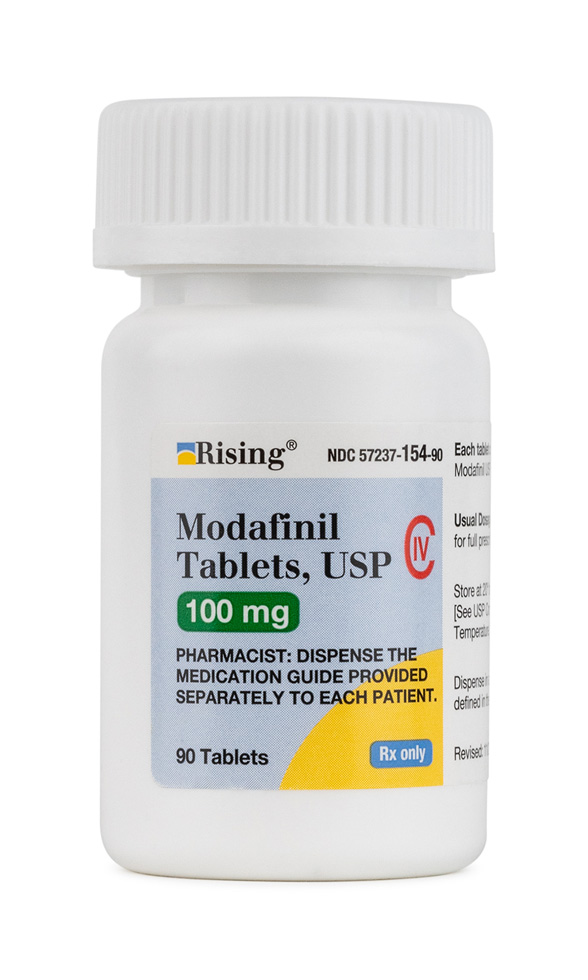
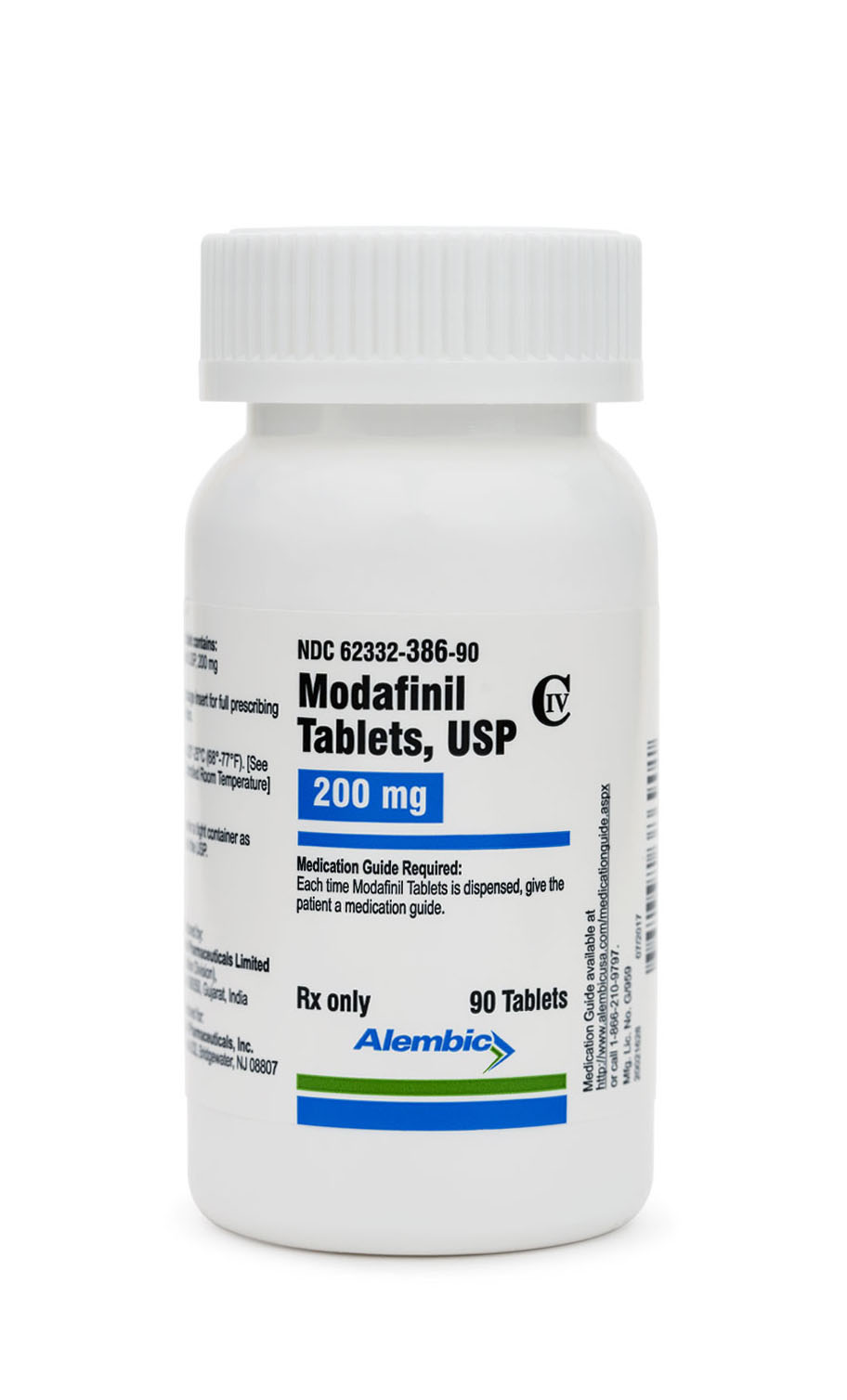
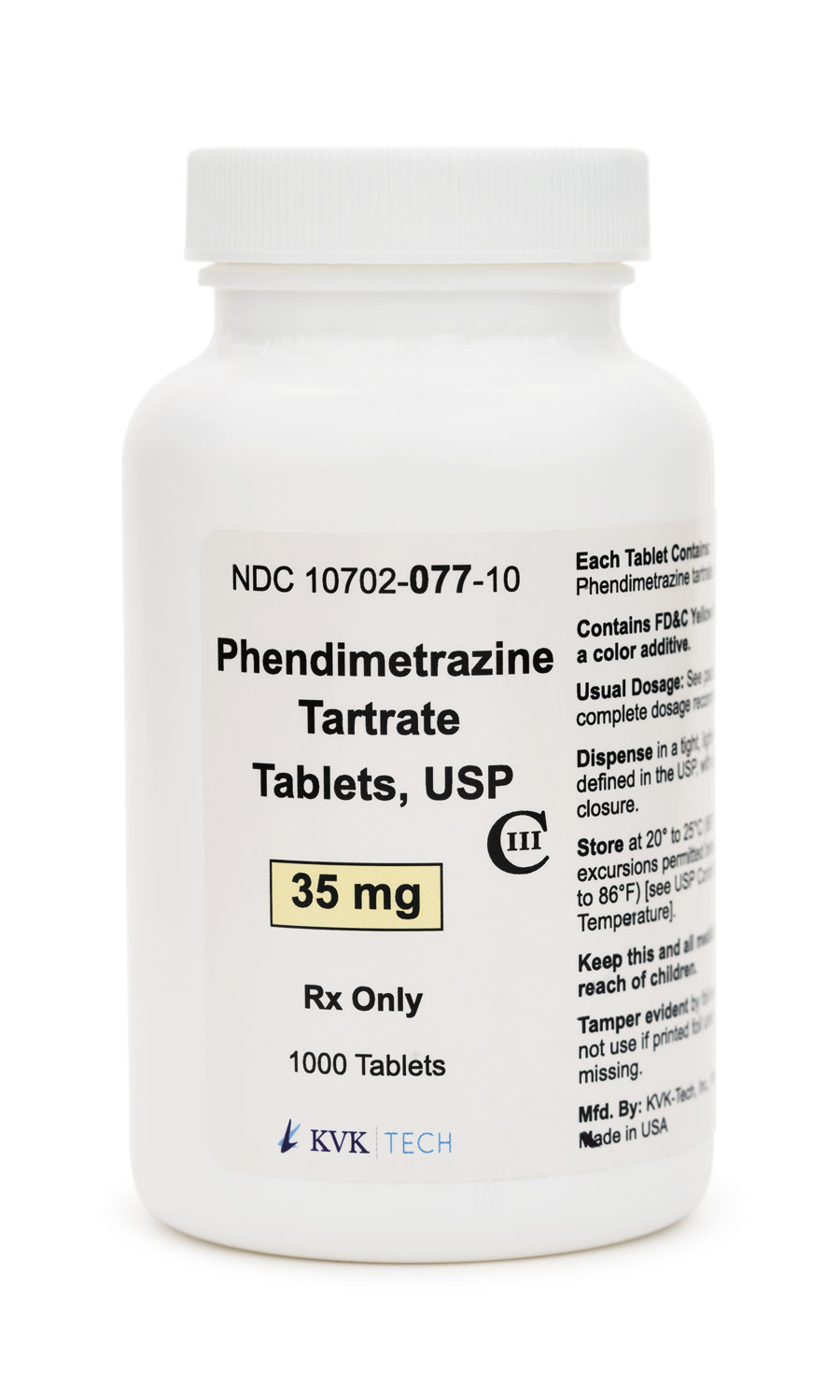 Phendimetrazine Tartrate Tablets
Phendimetrazine Tartrate Tablets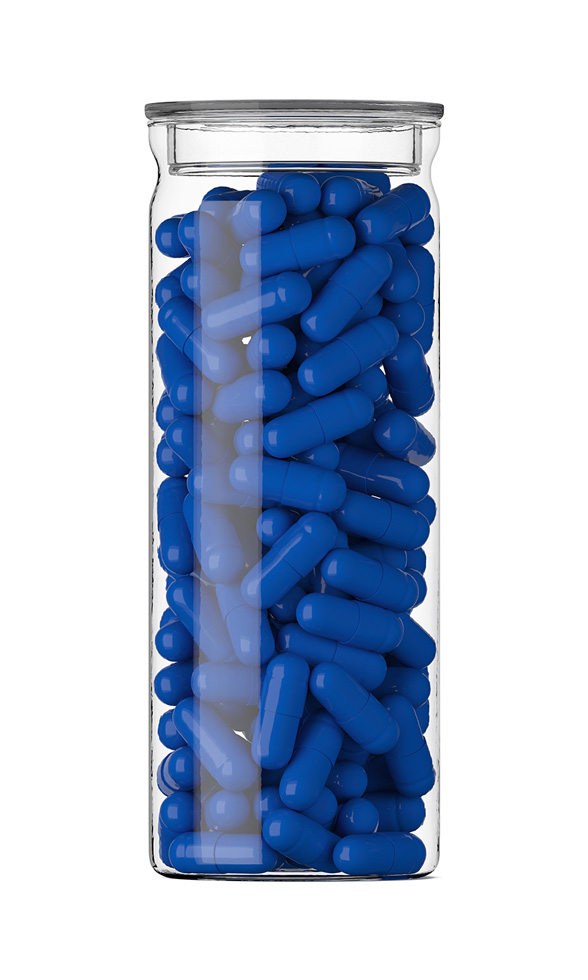 Phentermine HCl Capsules
Phentermine HCl Capsules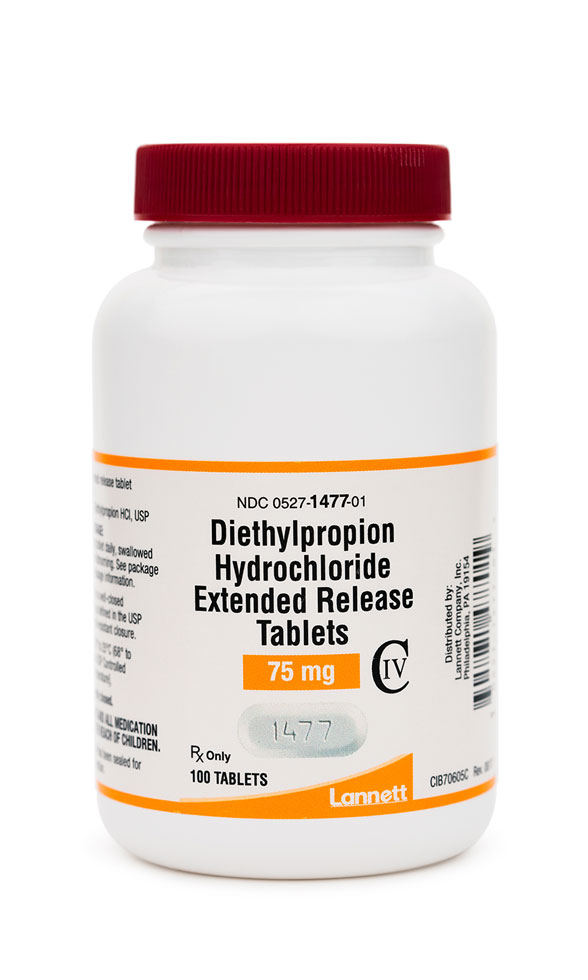 Diethylpropion HCl Tablets
Diethylpropion HCl Tablets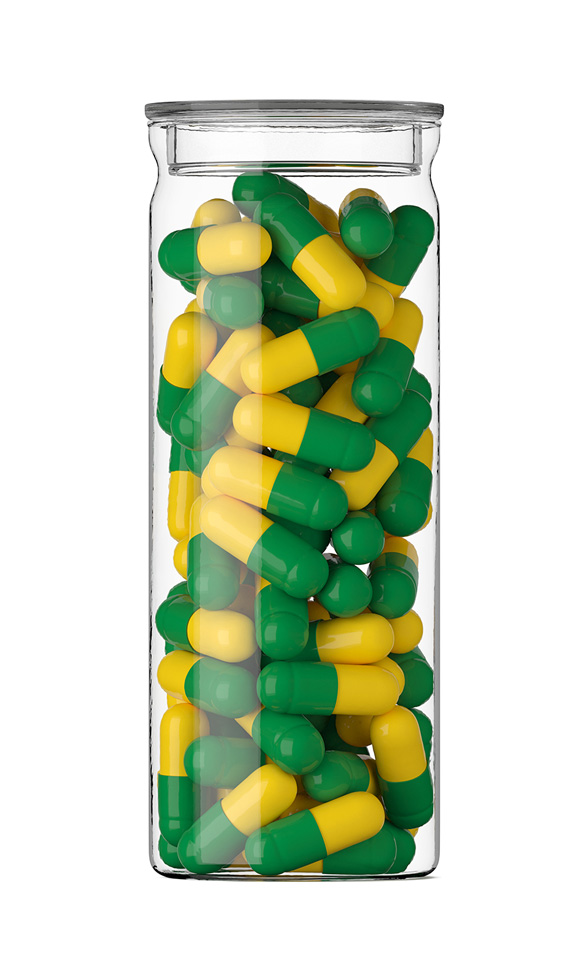 Bella Capsules
Bella Capsules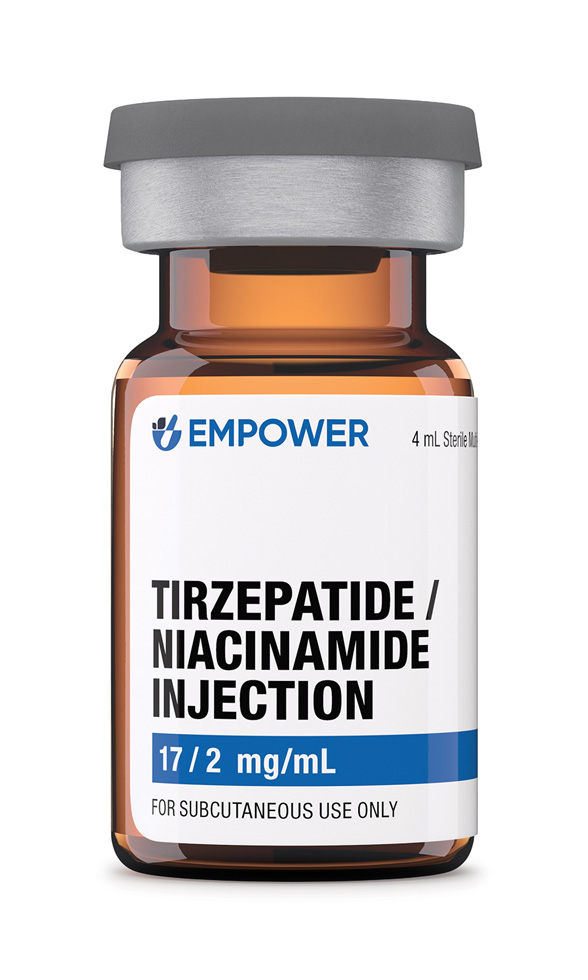 Tirzepatide / Niacinamide Injection
Tirzepatide / Niacinamide Injection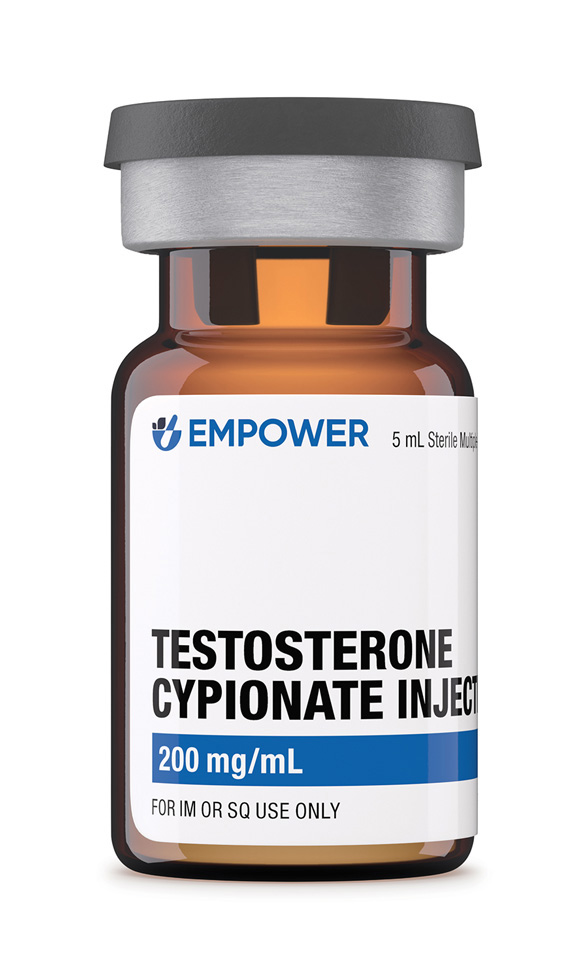 Testosterone Cypionate Injection
Testosterone Cypionate Injection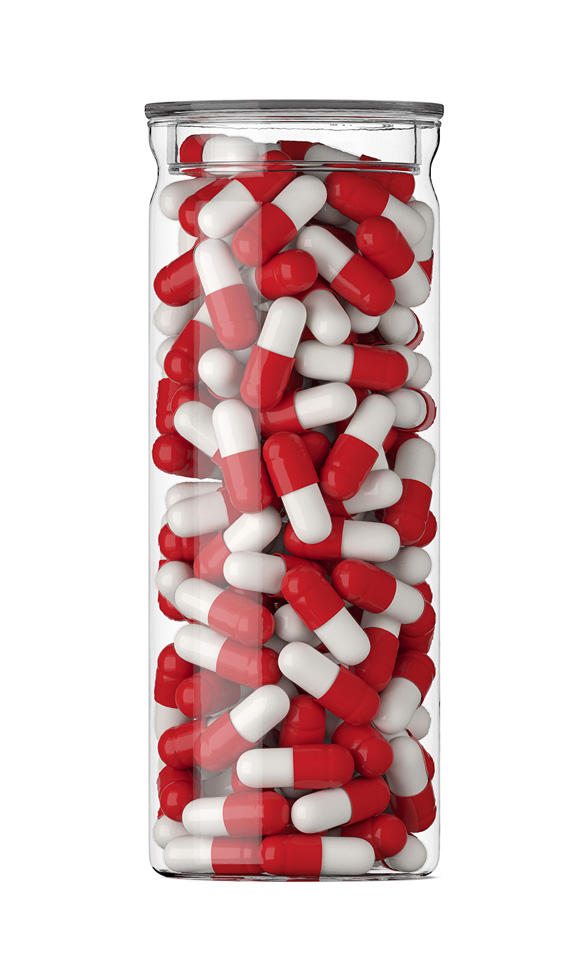 Anastrozole Capsules
Anastrozole Capsules Sildenafil / Tadalafil ODT
Sildenafil / Tadalafil ODT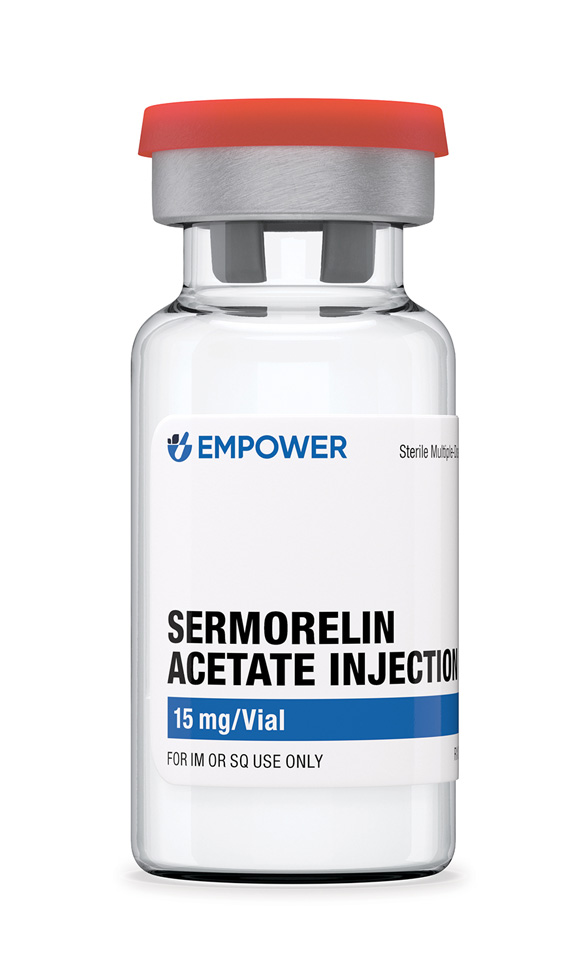 Sermorelin Acetate Injection
Sermorelin Acetate Injection